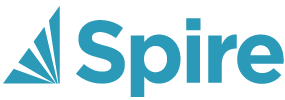Purchase Orders List – Menu Items
- Refresh – Allows you to view orders that have been added by other users
- Filters – Create a custom filter and save that filter to customize your view
- Export – Export the filtered list to Excel or .csv including your filtered screen layout and column positions
- Add – Add a new sales order
- Edit – Edit an existing sales order
- Delete – Delete a sales order. Deleted Sales orders can be un-deleted if the user has permission.
- Print – Prints a sales order report. The arrow beside the print button allows the user to choose to print all sales orders or the selected sales orders
- Copy – Copies the selected sales order
- Next Phase – Moves the sales order to its next phase
- Refresh Prices – Sets prices to default to a new sell price, including if a user has overridden the sell price
This list may not be in the same order because the columns can be moved and removed. Also some columns, like costs have security settings so some users may not see them at all.
Order No – Purchase order number. This is assigned sequentially when creating the PO. The starting number can be edited in Company Settings/Sequence Numbers
Vendor No. – The vendor’s code
Vendor Name – The vendor’s name
Status – The status on the PO. It can be:
- Open – This means that is is still editable and has not been sent to the vendor yet.
- Issued – Usually means that the vendor has received a copy of the purchase order. With the correct security permissions the user can un-issue and then edit the PO. Care should be taken to make sure the vendor has the correct copy of the PO.
- Received – Means that this PO has had some product received on it. It can be un-issued and edited, but the lines that have had receipts cannot be changed.
Order Date – The date the order was created. This date can be edited.
Warehouse – The warehouse the user was set to when the PO was created
Required Date – The date that is required for the items on the PO to arrive
Received Date – The date of the last receiving on this PO
Sub Total – The sub total of this PO before freight and taxes
Received Amount – The received to date value
Remaining Amount – The value still to be received
Total – The total with taxes and freight
Reference No – An external document number
FOB – Free On Board is a term in international commercial law specifying at what point the seller transfers ownership of the goods to the buyer. Many companies use this field for other data they want on the order instead of FOB.
Vendor Order Number – A confirmation number given by the vendor for this PO.
Buyer – The person that placed the order with the vendor.
Ship Via – How the product on this PO is to be shipped
Created By – Users initials that created this PO
Modified By – User initials that last edited this PO
Terms Code – Payment terms for this PO
Currency – The currency that the vendor sells product in.
Phase ID – The Phase that this PO is currently in.


